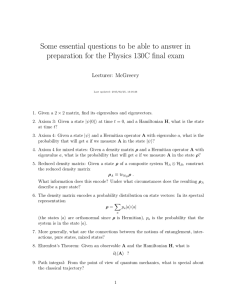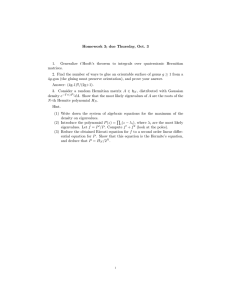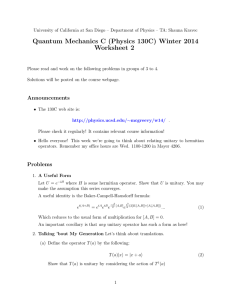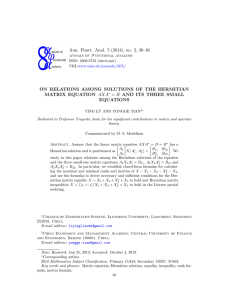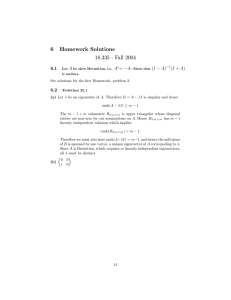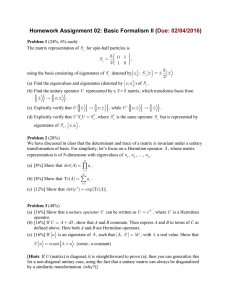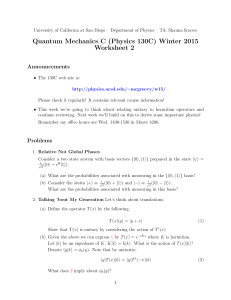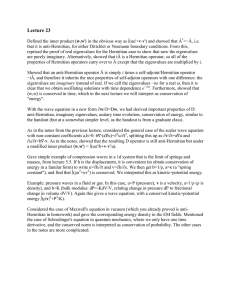18.701 November 15, 2010
advertisement
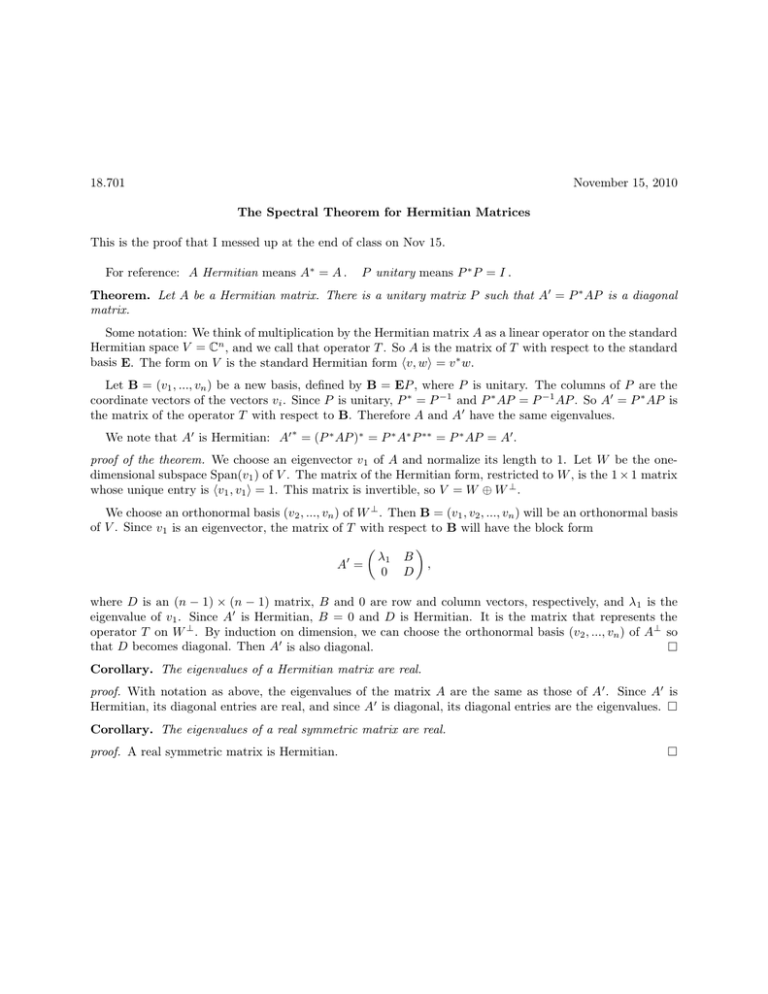
18.701 November 15, 2010 The Spectral Theorem for Hermitian Matrices This is the proof that I messed up at the end of class on Nov 15. For reference: A Hermitian means A� = A . P unitary means P � P = I . Theorem. Let A be a Hermitian matrix. There is a unitary matrix P such that A � = P � AP is a diagonal matrix. Some notation: We think of multiplication by the Hermitian matrix A as a linear operator on the standard Hermitian space V = Cn , and we call that operator T . So A is the matrix of T with respect to the standard basis E. The form on V is the standard Hermitian form �v, w� = v � w. Let B = (v1 , ..., vn ) be a new basis, defined by B = EP , where P is unitary. The columns of P are the coordinate vectors of the vectors vi . Since P is unitary, P � = P −1 and P � AP = P −1 AP . So A� = P � AP is the matrix of the operator T with respect to B. Therefore A and A� have the same eigenvalues. � We note that A� is Hermitian: A� = (P � AP )� = P � A� P �� = P � AP = A� . proof of the theorem. We choose an eigenvector v1 of A and normalize its length to 1. Let W be the onedimensional subspace Span(v1 ) of V . The matrix of the Hermitian form, restricted to W , is the 1 × 1 matrix whose unique entry is �v1 , v1 � = 1. This matrix is invertible, so V = W � W � . We choose an orthonormal basis (v2 , ..., vn ) of W � . Then B = (v1 , v2 , ..., vn ) will be an orthonormal basis of V . Since v1 is an eigenvector, the matrix of T with respect to B will have the block form � A = � �1 0 B D � , where D is an (n − 1) × (n − 1) matrix, B and 0 are row and column vectors, respectively, and � 1 is the eigenvalue of v1 . Since A� is Hermitian, B = 0 and D is Hermitian. It is the matrix that represents the operator T on W � . By induction on dimension, we can choose the orthonormal basis (v2 , ..., vn ) of A� so that D becomes diagonal. Then A� is also diagonal. � Corollary. The eigenvalues of a Hermitian matrix are real. proof. With notation as above, the eigenvalues of the matrix A are the same as those of A � . Since A� is Hermitian, its diagonal entries are real, and since A� is diagonal, its diagonal entries are the eigenvalues. � Corollary. The eigenvalues of a real symmetric matrix are real. proof. A real symmetric matrix is Hermitian. � MIT OpenCourseWare http://ocw.mit.edu 18.701 Algebra I Fall 2010 For information about citing these materials or our Terms of Use, visit: http://ocw.mit.edu/terms.
